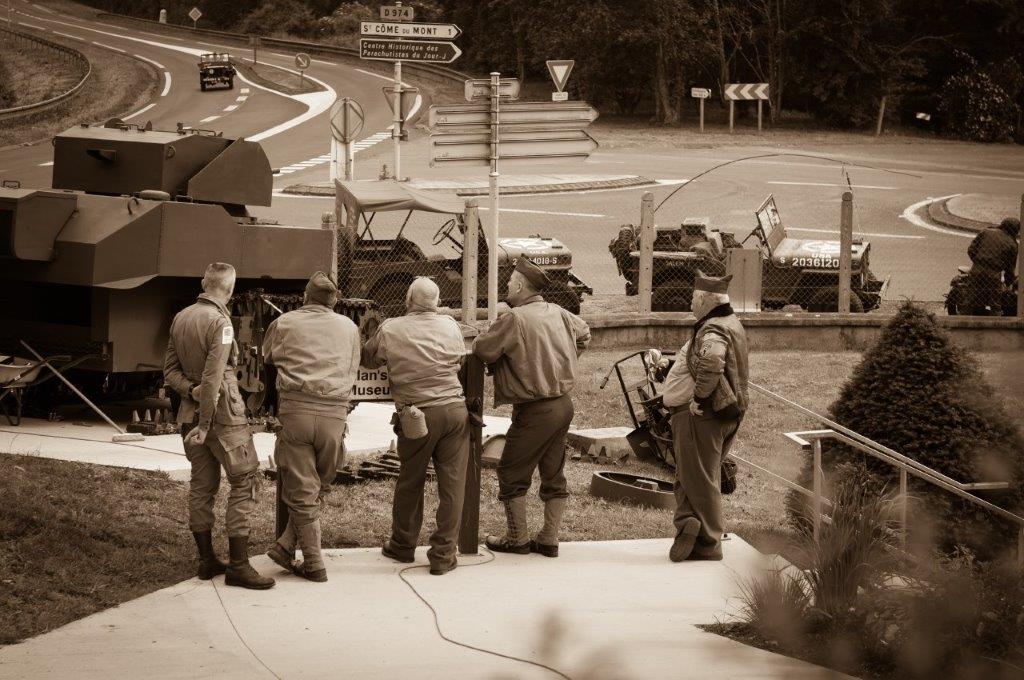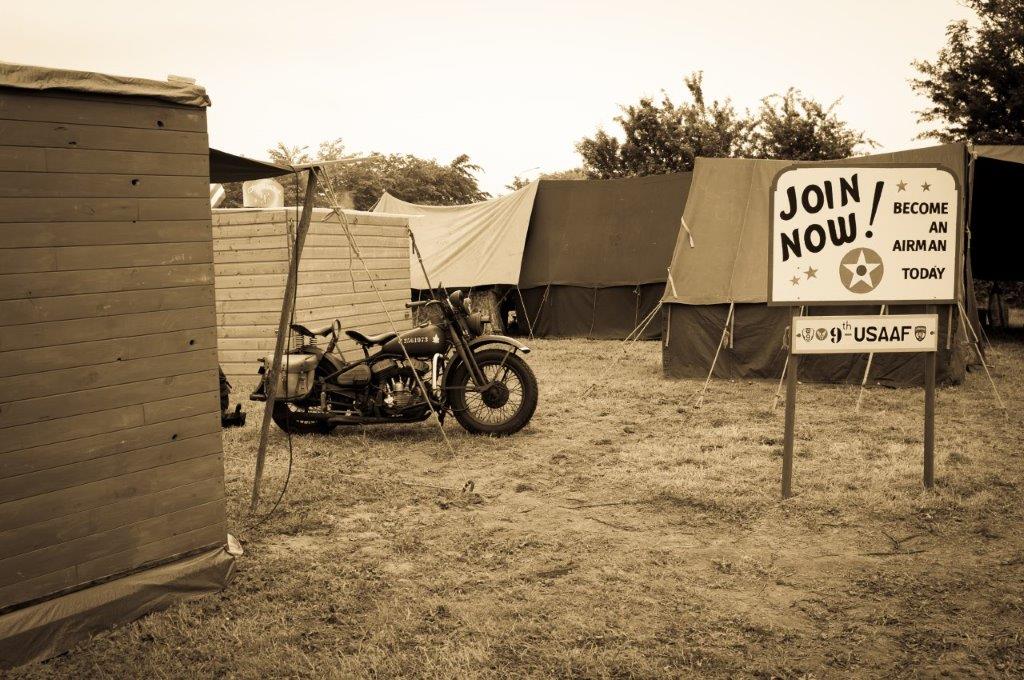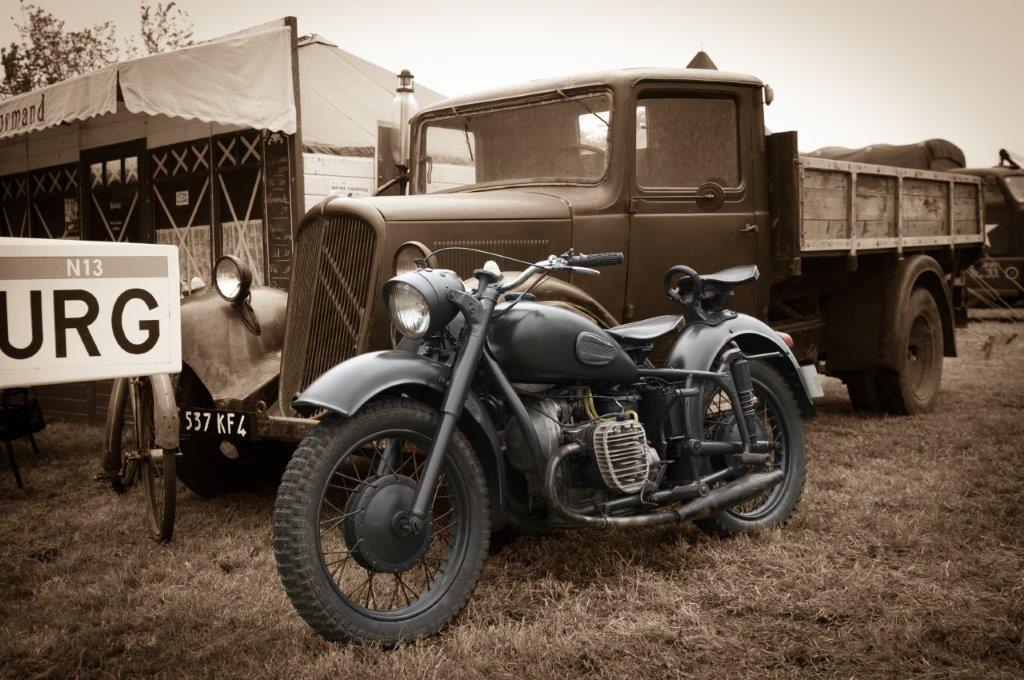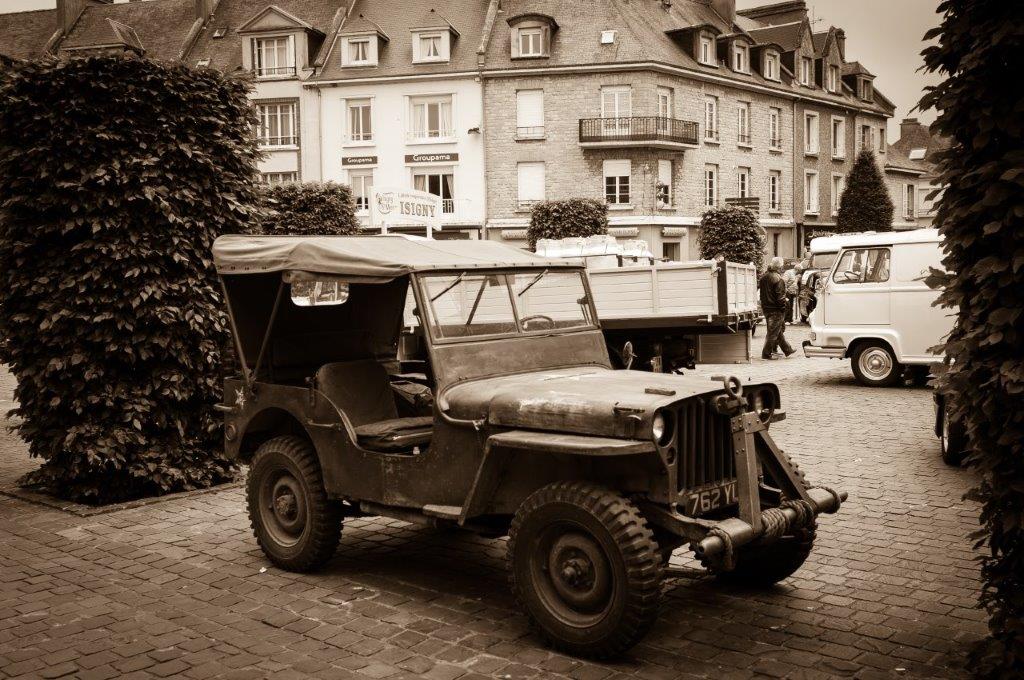D-Day 5- 6 June 1944
(Deze pagina in Nederlands)
On the night of June 5 and 6, 1944, exactly 80 years ago, the liberation of German-occupied Western Europe began on the Normandy coasts.
Under the name "Operation Overlord", the Allied forces took the largest amphibious landing in the history of the Normandy coasts.
"Overlord" was the beginning of the liberation of Western Europe. In Eastern Europe the Germans were already losing the Soviet Union and two days earlier Rome had already been conquered by the Allies.
Most of us understand "D-Day" as the liberation of Europe. In reality, "D-Day" is the start of "Operation Overlord", the first day of the invasion. Military terms, "D-Day" means the day on which an attack or operation is planned. In the early morning of June 6, the attacks on the Normandy beaches started.
The operation started with airborne landings and a massive amphibious assault. After the landing, an attempt was first made to maintain and expand the Normandy bridgehead. Various operations were undertaken for this purpose and during "Operation Cobra" the Allies finally broke through the German lines. When the Germans fell into the trap at Falaise, the battle was decided in the Allied favor. The road to Paris was open and the French capital was captured. The liberation of Paris is generally considered the end of "Operation Overlord".

The choice of landing site was quite limited.
Due to the limited flying range of the British fighter planes, the Pas de Calais and the beaches of Normandy were chosen as the "battle zone". Calais was closest to the United Kingdom, the beaches were the most suitable and the route to Germany was the shortest. But because a landing on this coast was very obvious and Hitler was convinced that the Allies would land here, this stretch of coast was also the most heavily defended. This was the deciding factor in the choice of Normandy.
The Allied forces were under the overall command of the American General, later President, Dwight D. Eisenhower. In January 1944, British Field Marshal Montgomery was appointed commander of the ground forces. It is well known that the two top military officers were not always on the same page, resulting in many discussions between the two.

In any case: in February 1944, Montgomery revised the plan for "Operation Overlord". On May 7, 1944, General Eisenhower sets the date for D-Day: June 5, 1944.
The troops embarked for the landing on June 3, 1944. On June 5, 1944, the landing was postponed for 24 hours due to bad weather conditions. On June 6, 1944, the day arrived: D-Day. At 00:20 the first British and American airborne divisions land on the Normandy beaches and at 04:30 the famous Sainte-Mère-Eglise is liberated.
To give an idea of the numbers: initially three divisions would land from the sea, supported by two airborne divisions. Montgomery quickly expanded this to five divisions by sea and three by air. A total of 47 divisions would be deployed for the operation: 26 divisions of British, Canadian, Commonwealth troops, and free Europeans and 21 American divisions. Under the command of Admiral Bertram Ramsey, 6,000 vessels would be deployed in the invasion, including 4,000 landing craft and 130 warships for bombardment of the coast. In addition, 12,000 aircraft under the command of Air Marshal Trafford Leigh-Mallory would be deployed to support the landings, including 1,000 transport aircraft to transfer the 20,000 paratroopers and airborne troops. 5,000 tons of bombs were used against German coastal defenses. According to documents later examined, 7,000 ships were said to have taken part in the invasion, including ships indirectly involved.

However, "Operation Overlord" and the road to final liberation did not go smoothly. An awful lot of lives were sacrificed for a free Western Europe. The Allied losses on D-Day itself are estimated at 10,000, of which 6,600 were American, 2,700 British and more than 900 Canadian.
In total, "Operation Overlord" cost 209,000 Allied casualties, of which 37,000 ground troops were killed and 16,714 air troops were killed. 83,045 casualties were from the 21st Army Group, composed of British, Canadians and Poles. 125,847 victims were Americans.

On the German side, 4,000 to 9,000 (estimates) men lost their lives on D-Day itself.
In total, the Germans lost 393,689 men in the battle in Normandy, of which approximately 200,000 were taken prisoners.
Yet figures that appeal to the imagination! Here we are once again confronted with the fact that peace demands many lives.
Source: "NSB Strijdersblad", article by Luc Bouvin.
(NSB is the "National Union of Fighters of Belgium")
Sabaton wrote a song about the Normandy landings:



















